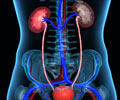University of California, Irvine (UCI) researchers have shown how cancer cells can alter their own genetic makeup to accelerate tumour growth by using a mathematical theory.
This is the first study to show why such alterations in the genetic makeup of cancer cells occur. It provides insight into how tumours thrive, besides offering a potential foundation for future cancer treatments.Mathematicians Natalia Komarova, Alexander Sadovsky, and Frederic Wan focused on the phenomenon of genetic instability, a common feature of cancer in which cells mutate at an abnormally fast rate, with a view to determining what can a tumour do to optimise its own growth.
The researchers say that such mutations can cause cancer cells to proliferate or to die.
It was found that tumours grow best when cancerous cells mutate to speed up malignant transformation, and then stay that way by turning off the mutation rate.
“Mathematical theory can help us understand cancer. If we know what cancer is doing, we might be able to find ways to fight it,” said Komarova, Associate Professor of Mathematics at UCI.
In order to determine the patter of genetic changes that leads to the most robust tumour growth, Komarova and her colleagues used a mathematical technique called optimal control theory in which they considered a tumour with set characteristics, then changed the cell mutation variable to see under which circumstances the tumour grew best.
Advertisement
“We found that at early stages of tumour growth, instability is advantageous, and later on it becomes an impediment. This explains why many tumours exhibit a high level of instability at first, and become stable later in their development,” she added.
Advertisement
Source-ANI
SRM/M








